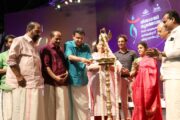Middle seats up for grabs, as Bombay High Court rules in favour of airlines
The Bombay High Court has allowed domestic and international airlines to fill up middle seats, providing some relief to the carriers. The high court, however, sought strict compliance with the May 31 circular of the Directorate General of Civil Aviation (DGCA) requiring passengers to wear wrap-around gowns in addition to a face shield and a mask.
A division bench of Justices S J Kathawalla and S P Tavade on Monday passed the judgment through video-conference on a plea filed by Air India pilot Deven Kanani, who alleged that national carrier Air India had violated social distancing norms while evacuating Indians stranded abroad on special flights.
The India government had all along been against keeping the middle seat vacant. In May, civil aviation minister Hardeep Singh Puri argued that airlines the world over had decided not to keep the middle seat empty, taking into account their commercial viability.
While the US Centre for Disease Control and Prevention had said sitting within six feet of each other for hours “may increase” the risk of exposure to coronavirus, it noted that “most viruses and other germs” did not spread easily on flights because of how air is circulated and filtered.
In its 50-paged judgement Monday, the court observed, “We are of the prima facie view that the safety and health of the passengers onboard the aircraft is adequately taken care of even if the middle seat of the aircraft is not kept vacant on account of passenger load and seat capacity.”
“However, the respondent Air India and all other flight operators in the country shall during the air travel of passengers, strictly follow and implement the order dated May 31, 2020 as well as the applicable SOPs,” it said.
On May 22, the high court had ‘prima facie’ observed that Air India was in violation of the guidelines and had sought a detailed explanation with the names of passengers who were allotted vacant seats and a list of the flights they took. Aviation authorities later moved the Supreme Court against the high court order.
Following a May 25 order by the Supreme Court, the DGCA on May 31 asked carriers to try to keep the middle seats on flights vacant or provide “wrap-around gowns” to passengers who were allotted such seats.
On June 2, the high court had asked DGCA and Air India to provide data of Indians, who were not infected while they boarded special flights under the Vande Bharat Mission, but tested positive for Covid-19 after landing in India.
After perusing the details given by the authorities, the high court had sought a clarification from an expert committee of the Civil Aviation Ministry to confirm whether the virus can be transmitted by touch.
Solicitor General Tushar Mehta submitted to the court a clarification by the high-level expert committee, which rejected the petitioner’s claims. The note said that the transmission of Covid-19 through touch could happen only under certain circumstances when protective gears are not worn and hands are not being disinfected.
Justice Kathawalla said, “Upon disembarking, thermal screening of all passengers is again carried out and they are thereafter compulsorily placed under institutional quarantine for 7-14 days. It is not established till date that any passenger, who is tested positive, has been infected on board an aircraft.”




